Portal:Spain
Portal maintenance status: (June 2018)
|
The Spain Portal (Bienvenido al portal español)

Spain, formally the Kingdom of Spain, is a country in southwestern Europe with territories in North Africa. It is the largest country in Southern Europe and the fourth-most populous European Union member state. Spanning across the majority of the Iberian Peninsula, its territory also includes the Canary Islands in the Atlantic Ocean, the Balearic Islands in the Mediterranean Sea, and the autonomous cities of Ceuta and Melilla in Africa. Peninsular Spain is bordered to the north by France, Andorra, and the Bay of Biscay; to the east and south by the Mediterranean Sea and Gibraltar; and to the west by Portugal and the Atlantic Ocean. Spain's capital and largest city is Madrid, and other major urban areas include Barcelona, Valencia, and Zaragoza.
In early antiquity, the Iberian Peninsula was inhabited by Celts, Iberians, and other pre-Roman peoples. With the Roman conquest of the Iberian Peninsula, the province of Hispania was established. Following the Romanization and Christianization of Hispania, the fall of the Western Roman Empire ushered in the inward migration of tribes from Central Europe, including the Visigoths, who formed the Visigothic Kingdom centred on Toledo. In the early eighth century, most of the peninsula was invaded by the Umayyad Caliphate, and during early Islamic rule, Al-Andalus became a dominant peninsular power centred on Córdoba. Several Christian kingdoms emerged in Northern Iberia, chief among them Asturias, León, Castile, Aragon, Navarre, and Portugal; made an intermittent southward military expansion and repopulation, known as the Reconquista, repelling Islamic rule in Iberia, which culminated with the Christian seizure of the Nasrid Kingdom of Granada in 1492. The dynastic union of the Crown of Castile and the Crown of Aragon in 1479 under the Catholic Monarchs is often considered the de facto unification of Spain as a nation-state. (Full article...)
 Featured article – show another
Featured article – show another
-
Image 1Conquistador Pedro de Alvarado led the initial efforts to conquer Guatemala.
In a protracted conflict during the Spanish colonization of the Americas, Spanish colonisers gradually incorporated the territory that became the modern country of Guatemala into the colonial Viceroyalty of New Spain. Before the conquest, this territory contained a number of competing Mesoamerican kingdoms, the majority of which were Maya. Many conquistadors viewed the Maya as "infidels" who needed to be forcefully converted and pacified, disregarding the achievements of their civilization. The first contact between the Maya and European explorers came in the early 16th century when a Spanish ship sailing from Panama to Santo Domingo was wrecked on the east coast of the Yucatán Peninsula in 1511. Several Spanish expeditions followed in 1517 and 1519, making landfall on various parts of the Yucatán coast. The Spanish conquest of the Maya was a prolonged affair; the Maya kingdoms resisted integration into the Spanish Empire with such tenacity that their defeat took almost two centuries. (Full article...) -
Image 2Nasr (1 November 1287 – 16 November 1322), full name Abu al-Juyush Nasr ibn Muhammad (Arabic: أبو الجيوش نصر بن محمد), was the fourth Nasrid ruler of the Emirate of Granada from 14 March 1309 until his abdication on 8 February 1314. He was the son of Muhammad II al-Faqih and Shams al-Duha. He ascended the throne after his brother Muhammad III was dethroned in a palace revolution. At the time of his accession, Granada faced a three-front war against Castile, Aragon and the Marinid Sultanate, triggered by his predecessor's foreign policy. He made peace with the Marinids in September 1309, ceding to them the African port of Ceuta, which had already been captured, as well as Algeciras and Ronda in Europe. Granada lost Gibraltar to a Castilian siege in September, but successfully defended Algeciras until it was given to the Marinids, who continued its defense until the siege was abandoned in January 1310. James II of Aragon sued for peace after Granadan defenders defeated the Aragonese siege of Almería in December 1309, withdrawing his forces and leaving the Emirate's territories by January. In the ensuing treaty, Nasr agreed to pay tributes and indemnities to Ferdinand IV of Castile and yield some border towns in exchange for seven years of peace. (Full article...)
-
Image 3

Boletus aereus, commonly known as the dark cep, bronze bolete, or queen bolete, is a highly prized and much sought-after edible mushroom in the family Boletaceae. The bolete is widely consumed in Spain (Basque Country and Navarre), France, Italy, Greece, and generally throughout the Mediterranean. Described in 1789 by French mycologist Pierre Bulliard, it is closely related to several other European boletes, including B. reticulatus, B. pinophilus, and the popular B. edulis. Some populations in North Africa have in the past been classified as a separate species, B. mamorensis, but have been shown to be phylogenetically conspecific to B. aereus and this taxon is now regarded as a synonym. (Full article...) -
Image 4

Plate 34: Por una navaja (For a clasp knife). A garroted priest grasps a crucifix in his hands. Pinned to his chest is a description of the crime for which he was killed—possession of a knife.
The Disasters of War (Spanish: Los desastres de la guerra) is a series of 82 prints created between 1810 and 1820 by the Spanish painter and printmaker Francisco Goya (1746–1828). Although Goya did not make known his intention when creating the plates, art historians view them as a visual protest against the violence of the 1808 Dos de Mayo Uprising, the subsequent cruel war that ended in Spanish victory in the Peninsular War of 1808–1814 and the setbacks to the liberal cause following the restoration of the Bourbon monarchy in 1814. During the conflicts between Napoleon's French Empire and Spain, Goya retained his position as first court painter to the Spanish crown and continued to produce portraits of the Spanish and French rulers. Although deeply affected by the war, he kept private his thoughts on the art he produced in response to the conflict and its aftermath. (Full article...) -
Image 5The Battle of Pavia, by an unknown Flemish artist
The Italian War of 1521–1526, sometimes known as the Four Years' War, (French: Sixième guerre d'Italie) was a part of the Italian Wars. The war pitted Francis I of France and the Republic of Venice against the Holy Roman Emperor Charles V, Henry VIII of England, and the Papal States. It arose from animosity over the election of Charles as Emperor in 1519–1520 and from Pope Leo X's need to ally with Charles against Martin Luther. (Full article...) -
Image 6
The Mercenary War, also known as the Truceless War, was a mutiny by troops that were employed by Carthage at the end of the First Punic War (264–241 BC), supported by uprisings of African settlements revolting against Carthaginian control. It lasted from 241 to late 238 or early 237 BC and ended with Carthage suppressing both the mutiny and the revolt. (Full article...) -
Image 7Muhammad III (Arabic: محمد الثالث; 15 August 1257 – 21 January 1314) was the ruler of the Emirate of Granada in Al-Andalus on the Iberian Peninsula from 8 April 1302 until 14 March 1309, and a member of the Nasrid dynasty. He ascended the Granadan throne after the death of his father Muhammad II, which according to rumours, was caused by Muhammad III poisoning him. He had the reputation of being both cultured and cruel. Later in his life, he became visually impaired—which caused him to be absent from many government activities and to rely on high officials, especially the powerful Vizier Ibn al-Hakim al-Rundi. (Full article...)
-
Image 8Muhammad II (Arabic: محمد الثاني) (also known by the epithet al-Faqih, "the canon-lawyer", c. 1235 – 8 April 1302; reigned from 1273 until his death) was the second Nasrid ruler of the Emirate of Granada in Al-Andalus on the Iberian Peninsula, succeeding his father, Muhammad I. Already experienced in matters of state when he ascended the throne, he continued his father's policy of maintaining independence in the face of Granada's larger neighbours, the Christian kingdom of Castile and the Muslim Marinid state of Morocco, as well as an internal rebellion by his family's former allies, the Banu Ashqilula. (Full article...)
-
Image 9
The First Punic War (264–241 BC) was the first of three wars fought between Rome and Carthage, the two main powers of the western Mediterranean in the early 3rd century BC. For 23 years, in the longest continuous conflict and greatest naval war of antiquity, the two powers struggled for supremacy. The war was fought primarily on the Mediterranean island of Sicily and its surrounding waters, and also in North Africa. After immense losses on both sides, the Carthaginians were defeated and Rome gained territory from Carthage. (Full article...) -
Image 10A Wehrmacht Panzerkampfwagen I Ausf. A light tank on display at the Deutsches Panzermuseum Munster in Munster, Germany.
The Panzer I was a light tank produced by Nazi Germany in the 1930s. Its name is short for Panzerkampfwagen I (German for "armored fighting vehicle mark I"), abbreviated as Pz.Kpfw. I. The tank's official German ordnance inventory designation was Sd.Kfz. 101 ("special purpose vehicle 101"). (Full article...) -
Image 11

Hieronymus Bosch, The Garden of Earthly Delights, oil on oak panels, 205.5 cm × 384.9 cm (81 in × 152 in), Museo del Prado, Madrid
The Garden of Earthly Delights (Dutch: De tuin der lusten, lit. 'The garden of lusts') is the modern title given to a triptych oil painting on oak panel painted by the Early Netherlandish master Hieronymus Bosch, between 1490 and 1510, when Bosch was between 40 and 60 years old. Bosch's religious beliefs are unknown, but interpretations of the work typically assume it is a warning against the perils of temptation. The outer panels place the work on the Third Day of Creation. The intricacy of its symbolism, particularly that of the central panel, has led to a wide range of scholarly interpretations over the centuries. (Full article...) -
Image 12
The Spanish conquest of Petén was the last stage of the conquest of Guatemala, a prolonged conflict during the Spanish colonisation of the Americas. A wide lowland plain covered with dense rainforest, Petén contains a central drainage basin with a series of lakes and areas of savannah. It is crossed by several ranges of low karstic hills and rises to the south as it nears the Guatemalan Highlands. The conquest of Petén, a region now incorporated into the modern republic of Guatemala, climaxed in 1697 with the capture of Nojpetén, the island capital of the Itza kingdom, by Martín de Ursúa y Arizmendi. With the defeat of the Itza, the last independent and unconquered native kingdom in the Americas fell to European colonisers. (Full article...) -
Image 13Spanish Leopard 2E in Zaragoza, June 2008
The Leopardo 2E or Leopard 2A6E (E stands for España (Spanish for 'Spain')) is a variant of the German Leopard 2 main battle tank (specifically the Leopard 2A6 variant), tailored to the requirements of the Spanish army, which acquired it as part of an armament modernization program named Programa Coraza, or Program Cuirass. The acquisition program for the Leopard 2E began in 1994, five years after the cancellation of the Lince tank program that culminated in an agreement to transfer 108 Leopard 2A4s to the Spanish army in 1998 and started the local production of the Leopard 2E in December 2002. Despite postponement of production owing to the 2003 merger between Santa Bárbara Sistemas and General Dynamics, and continued manufacturing issues between 2006 and 2007, 219 Leopard 2Es have been delivered to the Spanish army. (Full article...) -
Image 14

The Third of May 1808 in Madrid (also known as El tres de mayo de 1808 en Madrid or Los fusilamientos de la montaña del Príncipe Pío, or Los fusilamientos del tres de mayo. Commonly known as The Third of May 1808.) is a painting completed in 1814 by the Spanish painter Francisco Goya, now in the Museo del Prado, Madrid. In the work, Goya sought to commemorate Spanish resistance to Napoleon's armies during the occupation of 1808 in the Peninsular War. Along with its companion piece of the same size, The Second of May 1808 (or The Charge of the Mamelukes), it was commissioned by the provisional government of Spain at Goya's own suggestion shortly after the ousting of the French occupation and the restoration of King Ferdinand VII. (Full article...) -
Image 15
Alfonso XIII was the second of three España-class dreadnought battleships built in the 1910s for the Spanish Navy. Named after King Alfonso XIII of Spain, the ship was not completed until 1915 owing to a shortage of materials that resulted from the start of World War I the previous year. The España class was ordered as part of a naval construction program to rebuild the fleet after the losses of the Spanish–American War; the program began in the context of closer Spanish relations with Britain and France. The ships were armed with a main battery of eight 305 mm (12 in) guns and were intended to support the French Navy in the event of a major European war. (Full article...) -
Image 16
Verdeja was the name of a series of light tanks developed in Spain between 1938 and 1954 in an attempt to replace German Panzer I and Soviet T-26 tanks in Spanish service. (Full article...) -
Image 17Northern Italy in 1494; by the start of the war in 1508, Louis XII had expelled the Sforza from the Duchy of Milan and added its territory to France.
The War of the League of Cambrai, sometimes known as the War of the Holy League and several other names, was fought from February 1508 to December 1516 as part of the Italian Wars of 1494–1559. The main participants of the war, who fought for its entire duration, were France, the Papal States, and the Republic of Venice; they were joined at various times by nearly every significant power in Western Europe, including Spain, the Holy Roman Empire, England, the Duchy of Milan, the Republic of Florence, the Duchy of Ferrara, and the Swiss. (Full article...) -
Image 18Abu Abdullah Muhammad ibn Ismail (Arabic: أبو عبد الله محمد الرابع), known as Muhammad IV, (14 April 1315 – 25 August 1333) was the ruler of the Emirate of Granada on the Iberian Peninsula from 1325 to 1333. He was the sixth sultan of the Nasrid dynasty, succeeding to the throne at ten years old when his father, Ismail I (r. 1314–1325), was assassinated. (Full article...)
-
Image 19The battle of New Carthage took place in early 209 BC when a Roman army under Publius Cornelius Scipio successfully assaulted New Carthage, the capital of Carthaginian Iberia, which was defended by a garrison under Mago. The battle was part of the Second Punic War. (Full article...)
-
Image 20

A carillonneur plays the 56-bell carillon of the Plummer Building, Rochester, Minnesota, US
A carillon is a pitched percussion instrument that is played with a keyboard and consists of at least 23 bells. The bells are cast in bronze, hung in fixed suspension, and tuned in chromatic order so that they can be sounded harmoniously together. They are struck with clappers connected to a keyboard of wooden batons played with the hands and pedals played with the feet. Often housed in bell towers, carillons are usually owned by churches, universities, or municipalities. They can include an automatic system through which the time is announced and simple tunes are played throughout the day. (Full article...) -
Image 21Abu'l-Walid Ismail I ibn Faraj (Arabic: أبو الوليد إسماعيل الأول بن فرج, 3 March 1279 – 8 July 1325) was the fifth Nasrid ruler of the Emirate of Granada on the Iberian Peninsula from 1314 to 1325. A grandson of Muhammad II on the side of his mother Fatima, he was the first of the lineage of sultans now known as the al-dawla al-isma'iliyya al-nasriyya (the Nasrid dynasty of Ismail). Historians characterise him as an effective ruler who improved the emirate's position with military victories during his reign. (Full article...)
-
Image 22
The Second Punic War (218 to 201 BC) was the second of three wars fought between Carthage and Rome, the two main powers of the western Mediterranean in the 3rd century BC. For 17 years the two states struggled for supremacy, primarily in Italy and Iberia, but also on the islands of Sicily and Sardinia and, towards the end of the war, in North Africa. After immense materiel and human losses on both sides, the Carthaginians were once again defeated. Macedonia, Syracuse and several Numidian kingdoms were drawn into the fighting, and Iberian and Gallic forces fought on both sides. There were three main military theatres during the war: Italy, where Hannibal defeated the Roman legions repeatedly, with occasional subsidiary campaigns in Sicily, Sardinia and Greece; Iberia, where Hasdrubal, a younger brother of Hannibal, defended the Carthaginian colonial cities with mixed success before moving into Italy; and Africa, where Rome finally won the war. (Full article...) -
Image 23

Joseph Anton Lopez SJ (born José Antonio López; October 4, 1779 – October 5, 1841) was a Mexican Catholic priest and Jesuit. Born in Michoacán, he studied canon law at the Colegio de San Nicolás and the Royal and Pontifical University of Mexico. He became acquainted with the future Empress consort Ana María Huarte and was made chaplain to the future imperial family. He was later put in charge of the education of all the princes in Mexico. Lopez was a close ally of Emperor Agustín de Iturbide, residing in Madrid for four years as his attorney and political informant, and accompanying him during his exile to Italy and England. (Full article...) -
Image 24Lombardy in 1522. The location of the battle is marked.
The Battle of Bicocca or La Bicocca (Italian: Battaglia della Bicocca) was fought on 27 April 1522, during the Italian War of 1521–26. A combined French and Venetian force under Odet de Foix, Vicomte de Lautrec, was decisively defeated by an Imperial–Spanish and Papal army under the overall command of Prospero Colonna. Lautrec then withdrew from Lombardy, leaving the Duchy of Milan in Imperial hands. (Full article...) -
Image 25
The Battle of Halmyros, known by earlier scholars as the Battle of the Cephissus or Battle of Orchomenos, was fought on 15 March 1311, between the forces of the Frankish Duchy of Athens and its vassals under Walter of Brienne against the mercenaries of the Catalan Company, resulting in a decisive victory for the mercenaries. (Full article...)
Selected biography

Queen Sofía of Spain (Spanish: Su Majestad la Reina Sofía de España, Greek: Βασίλισσα Σοφία της Ισπανίας;) born Princess Sophia of Greece and Denmark on November 2, 1938; full name Sophía Margaríta Viktoría Frederíki), is the Queen Consort of King Juan Carlos I of Spain. Princess Sophia of Greece and Denmark was born in Athens, Greece on November 2, 1938, the eldest child of the King Paul I of the Hellenes (1901-1964) and his wife, Queen Frederika (1917-1981), a former princess of Hanover. Queen Sofia is a member of the Schleswig-Holstein-Sonderburg-Glücksburg dynasty. Her brother is Constantine II of Greece and her sister Princess Irene of Greece and Denmark. However, since the restoration of democracy, the royal titles are not recognized in Greece, where the former royal family is held in low regard by most Greeks.
Princess Sophia spent her childhood in Egypt and South Africa during her family's exile from Greece during World War II. They returned to Greece in 1946. She finished her education at the prestigious Schloss Salem boarding school in Southern Germany, and then studied pediatrics, music, and archeology in Athens. On May 14, 1962 Princess Sophia of Greece and Denmark married Prince Juan Carlos of Spain, the future king, whom she met on a cruise of the Greek Islands in 1954. In doing so, she relinquished her rights to the throne of Greece and converted to Roman Catholicism from Greek Orthodoxy. Further, the Latin transliteration of her Greek name Σοφία was changed from Sophia to the Spanish variant Sofía, which nonetheless is pronounced
Selected picture
-
Image 1Photo credit: DiliffThe Torre Agbar is a landmark skyscraper and the third tallest building in Barcelona, Spain. It was designed by French architect Jean Nouvel, who stated that the shape of the Torre Agbar was inspired by the mountains of Montserrat that surround Barcelona, and by the shape of a geyser of water rising into the air. Its design combines a number of different architectural concepts, resulting in a striking structure built with reinforced concrete, covered with a facade of glass, and over 4,500 window openings cut out of the structural concrete.
-
Image 2

Windmills Credit: Lourdes Cardenal
Active windmills shown turning in La Mancha. The area is now famous for its windmills and scenic views. -
Image 3Photograph: J.Ligero & I.BarriosA three-month old Spanish ibex (Capra pyrenaica) in Sierra de Gredos, Spain. These ibexes are strong mountain animals characterized by their large and flexible hooves and short legs.
The two sexes of adults form separate social groups; juveniles stay with the female groups from birth until the following birth season, when they leave. Yearling males then join male groups, while females eventually return to their mothers' groups and stay several years. -
Image 4Photo credit: David IliffThe Queen Sofia Palace of the Arts (Valencian: Palau de les Arts Reina Sofía) is an opera house located in Valencia, Spain. The last to be completed of the City of Arts and Sciences complex, it was designed by architect Santiago Calatrava. The 14-story structure opened on 8 October 2005.
-
Image 5Photograph: Diego DelsoThe Assut de l'Or Bridge is a white single-pylon cable-stayed bridge in the City of Arts and Sciences, Valencia, Spain. Completed in 2008, it was designed by Valencian architect and civil engineer Santiago Calatrava as a variant of his cantilever spar cable-stayed bridge in Seville.
-
Image 6Image: Royal Household of Spain; Restoration: Lise BroerA Grant of Arms by Philip II of Spain to Alonso de Mesa and Hernando de Mesa, signed 25 November 1566. In Spanish heraldry, coats of arms were granted based almost entirely on military service, which made it possible for commoners to join the ranks of the Spanish nobility. Also unique to Spain was that titles could be inherited through females and via illegitimacy.
-
Image 7

Timanfaya National Park Credit: Yummifruitbat
Timanfaya National Park (Spanish: Parque Nacional de Timanfaya) is a national park, covering the southern area of Tinajo, Las Palmas and the northern area of Yaiza, Las Palmas. The parkland is made up of volcanic soil, with the strongest recorded eruptions occurring between 1730 and 1736. -
Image 8Painting: Marià FortunyThe Spanish Wedding is an oil on panel painting by Marià Fortuny completed over a two-year period ending in 1870. It depicts the signing of a wedding contract in 18th century Spain and was influenced heavily by the works of Francisco Goya, whom the artist admired. It is currently exhibited at the National Art Museum of Catalonia.
-
Image 9

Las Médulas mine. Credit: Rayet
Las Médulas, located near the town of Ponferrada in León province, Spain, used to be the most important gold mine in the Roman Empire. Las Médulas Cultural Landscape is listed by the UNESCO as one of the World Heritage Sites. -
Image 10Photograph credit: Biblioteca Nacional de EspañaAna Santos Aramburo (born 1957) has been the director of the National Library of Spain since February 2013. Having received a degree in geography and history from the University of Zaragoza in Spain, she has spent much of her career working at the Complutense University of Madrid, first at the library of the Faculty of Economics and Business Sciences, and later serving as deputy director of the university library. Later she served as Director of the Historical Library Marquis of Valdecilla, General Director of Libraries and Archives of the City of Madrid, and Director of Cultural Action at the National Library. This photograph of Santos shows her at the headquarters of the National Library of Spain in Madrid.
-
Image 11

A statue showing Christopher Columbus Credit: Luis GarcíaA statue showing Christopher Columbus and Queen Isabella, the statue was made in 1885. -
Image 12
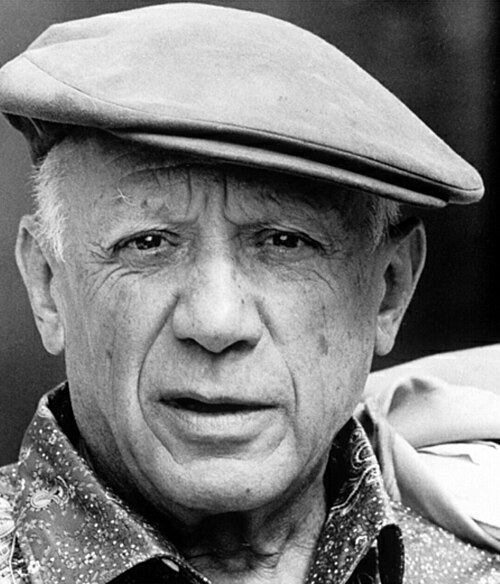
Pablo Picasso Credit: TyreniusPablo Picasso (October 25, 1881 — April 8, 1973) was an artist and sculptor. Picasso was born in Málaga, Spain. This image was taken of him in 1962, eleven years before his death. -
Image 13Coin design credit: Duchy of ParmaThe doubloon was a Spanish gold coin worth two escudos or 32 reales weighing 6.867 grams (0.221 troy ounces), introduced in 1537. It became the model for several other gold coins issued in Europe, including this 1626 two-doppie gold coin issued in Piacenza in northern Italy by the Duchy of Parma, depicting Odoardo Farnese, Duke of Parma, on the obverse. The coin is part of the National Numismatic Collection at the National Museum of American History.
-
Image 14Artist: UnknownFerdinand I, Holy Roman Emperor, is represented in this anonymous portrait as a young archduke in his native Spain. He left Spain in his early twenties, to start his life as future King of the Romans and successor to his grandfather, Maximilian I. His older brother Charles eventually succeeded as Holy Roman Emperor, but Ferdinand was elected after Charles's abdication. Philip, Charles's son, inherited Spain and became King Philip II of Spain. Ferdinand ruled between 1558 and 1564, for nearly six years.
-
Image 15Painting credit: Federico de Madrazo y KuntzAmalia de Llano (April 29, 1822 – July 6, 1874) was a Spanish countess and writer. This 1853 oil-on-canvas portrait by Federico de Madrazo y Kuntz shows her seated in a fine armchair wearing sumptuous clothes, with her youth and beauty accentuated by the dark background, and is quite unlike a traditional Spanish portrait of the period.
-
Image 16Banknote: Bank of SpainThe Spanish peseta is a former currency of Spain and, alongside the French franc, a former de facto currency in Andorra. It was introduced in 1868, replacing the peso, at a time when Spain was considering joining the Latin Monetary Union. Spain joined the euro in 1999, and the peseta was replaced by euro notes and coins in 2002.
This picture shows a 1000 peseta banknote from 1957. The obverse depicts the Catholic Monarchs while the reverse shows the coat of arms of Spain. -
Image 17Painting: Francisco GoyaThe Third of May 1808 is a painting completed in 1814 by the Spanish master Francisco Goya, now in the Museo del Prado, Madrid. Along with its companion piece of the same size, The Second of May 1808 (or The Charge of the Mamelukes), it was commissioned by the provisional government of Spain at Goya's suggestion. Goya sought to commemorate Spanish resistance to Napoleon's armies during the Peninsular War.
-
Image 18An overturned tourer caravan which was damaged by the effects of Tropical Storm Delta (2005). Considerable other damage was caused to other areas of the Canary Islands during the storm.
-
Image 19Gaspar de Guzmán, Count-Duke of Olivares (1587–1645) was a Spanish royal favourite of Philip IV and minister. As prime minister from 1621 to 1643, he over-exerted Spain in foreign affairs and unsuccessfully attempted domestic reform. His policies of committing Spain to recapture the Dutch Republic led to his major involvement in the Thirty Years War. This portrait was completed in 1634, with its composition referring to Olivares' military leadership in the service of King Philip.
-
Image 20
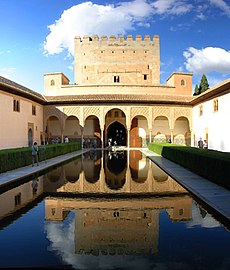
Alhambra Credit: Ra-smit
The Alhambra (Arabic: الحمراء = Al-Ħamrā; literally "the red") is a palace and fortress complex of the Moorish monarchs of Granada in southern Spain (known as Al-Andalus when the fortress was constructed), occupying a hilly terrace on the southeastern border of the city of Granada. -
Image 21Architecture credit: José Grases Riera; photographed by Carlos DelgadoThe Monument to Alfonso XII is located in Buen Retiro Park (El Retiro) in Madrid, Spain. Measuring 30 m (98 ft) high, 86 m (282 ft) long, and 58 m (190 ft) wide, it has at its center an equestrian statue of King Alfonso XII, cast in bronze by the Spanish sculptor Mariano Benlliure in 1904. The monument is situated on the eastern edge of an artificial lake near the center of the park and was inaugurated on 6 June 1922.
-
Image 22Photo: David IliffThe Giralda is a 104.5 m (343 ft) tall bell tower for the Seville Cathedral in Seville, Andalusia, Spain. It was originally constructed as a minaret in 1198, when Seville was ruled by the Almohad Caliphate. After the city was taken by the Christians in the Reconquista, the city's mosque was converted to a church. The upper third of the structure was completed during the Spanish Renaissance.
Did you know...
- ... that Irish International Brigader Tommy Wood had only been in Spain for 18 days when he was killed at the Battle of Lopera during the Spanish Civil War?
- ... that after fleeing the Spanish Civil War to Venezuela, Spanish anarchist Concha Liaño became a supporter of Hugo Chávez?
- ... that some California schoolchildren build dioramas when learning about their state's Spanish missions?
- ... that the flag of La Guaira is based on the design of a banner from a 1797 conspiracy against Spanish rule in Venezuela?
- ... that the Kitāb al-ṭabīẖ, a medieval Andalusian cookbook, contains an early version of Jewish challah bread, which traveled with Jews expelled from Spain and likely influenced Ashkenazi cuisine?
- ... that Mariano R. Vázquez oversaw the integration of anarchists into the government during the Spanish Civil War?
 Good article – show another
Good article – show another
-
Image 1The 2011 season for Euskaltel–Euskadi began in January at the Tour Down Under and ended in October at the Giro di Lombardia. It was the team's eighteenth season as a professional cycling team, and its eleventh with UCI ProTeam – Trade Team 1 between 2001 and 2004 – status. As a UCI ProTeam, they were automatically invited and obligated to send a squad to every event on the UCI World Tour calendar. For the second year in a row, the traditionally all-Basque team added a French rider. This year, it was second-year professional Pierre Cazaux, who rode for FDJ in 2010. (Full article...)
-
Image 2

The 2016 Spanish Grand Prix (formally known as the Formula 1 Gran Premio de España Pirelli 2016) was a Formula One motor race held on 15 May 2016 at the Circuit de Barcelona-Catalunya in Montmeló, Spain. The race was the fifth round of the 2016 FIA Formula One World Championship, and marked the forty-sixth running of the Spanish Grand Prix as a round of the Formula One World Championship. It was the twenty-sixth time that the race has been held at the circuit. (Full article...) -
Image 3

The Spanish American wars of independence (Spanish: Guerras de independencia hispanoamericanas) took place across the Spanish Empire in the early 19th century. The struggles in both hemispheres began shortly after the outbreak of the Peninsular War, forming part of the broader context of the Napoleonic Wars. The conflict unfolded between the royalists, who were defeated and favored a unitary monarchy, and the patriots, who won and promoted either plural monarchies or republics, separated from Spain and from each other. These struggles ultimately led to the independence and secession of continental Spanish America from metropolitan rule, which, beyond this conflict, resulted in a process of Balkanization in Latin America. Thus, the strict period of military campaigns ranges from the Battle of Chacaltaya (1809) in present-day Bolivia, to the Battle of Tampico (1829) in Mexico.[page needed] (Full article...) -
Image 4

The 2008 Spanish Grand Prix (formally the Formula 1 Gran Premio de España Telefónica 2008) was a Formula One motor race held on 27 April 2008 at the Circuit de Catalunya, Montmeló, Spain. It was the fourth race of the 2008 Formula One World Championship. Kimi Räikkönen for the Ferrari team won the 66-lap race starting from pole position. Felipe Massa finished second in the other Ferrari, and Lewis Hamilton was third in a McLaren. (Full article...) -
Image 5
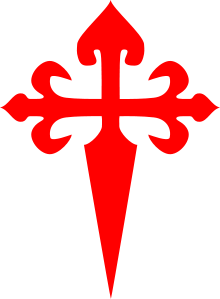
Cross of Saint James as used by the Order of Santiago
The Cross of Saint James, also known as the Santiago cross, cruz espada, or Saint James' Cross, is a cruciform (cross-shaped) heraldic badge. The cross, shaped as a cross fitchy, combines with either a cross fleury or a cross moline. Its most common version is a red cross resembling a sword, with the hilt and the arm in the shape of a fleur-de-lis. (Full article...) -
Image 6

Illustration of the dreadnought España in 1912
In the latter half of the 19th century, the Spanish Navy had built a series of ironclad warships that culminated in the barbette ship Pelayo in the 1880s. Following the destruction of much of the Spanish fleet in the Spanish–American War in 1898, Spain slowly began to rebuild its navy. In the early 20th century, the Spanish Navy built three battleships and planned several more; the three ships that were completed were the vessels of the España class. These ships were the smallest dreadnought-type battleships ever built. A further three ships of the Reina Victoria Eugenia class were authorized by the Navy Law of 1913, but the outbreak of World War I prevented these ships from being built, as Spain was heavily dependent on Great Britain for material and technical expertise. The three completed battleships all served in the Rif War in North Africa, where the lead ship, España, ran aground and was wrecked. (Full article...) -
Image 7The 2016 Tour of the Basque Country (Spanish: Vuelta al Pais Vasco, Basque: Euskal Herriko itzulia) was a road cycling stage race that took place in the Basque Country between 4 and 9 April 2016. It was the 56th edition of the Tour of the Basque Country and the ninth event of the 2016 UCI World Tour. (Full article...)
-
Image 8"Enamorado Por Primera Vez" (English: "In Love For the First Time") is a song by Spanish singer Enrique Iglesias from his second studio album, Vivir (1997). The song was written by Iglesias and produced by Rafael Pérez-Botija. It was released as the lead single from the album on 18 January 1997. A pop power ballad which he wrote when he was 18, the song is about the singer feeling like he is falling in love for the first time again. The song received positive reactions from three music journalists, although one critic wrote an unfavorable review of it. (Full article...)
-
Image 9Location of Valencia within Spain
Valencia (Valencian: València) is one of the 52 constituencies (Spanish: circunscripciones) represented in the Congress of Deputies, the lower chamber of the Spanish parliament, the Cortes Generales. The constituency currently elects 16 deputies. Its boundaries correspond to those of the Spanish province of Valencia. The electoral system uses the D'Hondt method and a closed-list proportional representation, with a minimum threshold of three percent. (Full article...) -
Image 10
The Revolt of the Comuneros (Spanish: Guerra de las Comunidades de Castilla, "War of the Communities of Castile") was an uprising by citizens of Castile against the rule of Charles I and his administration between 1520 and 1521. At its height, the rebels controlled the heart of Castile, ruling the cities of Valladolid, Tordesillas, and Toledo. (Full article...) -
Image 11
El Celler de Can Roca is a restaurant in Girona, Catalonia, Spain opened in 1986 by the Roca brothers, Joan, Josep and Jordi. It was first located next to their parents' restaurant Can Roca, but moved to its current purpose-built building in 2007. It has been received warmly by critics, and holds three Michelin stars.
El Celler de Can Roca was ranked the best restaurant in the world by the magazine Restaurant in 2013 and 2015, and was ranked second in 2011, 2012, 2014, and 2018. (Full article...) -
Image 12The 2016 Volta a Catalunya was a road cycling stage race that took place in Catalonia, Spain, from 21 to 27 March. It was the fifth race of the 2016 UCI World Tour and the 96th edition of the Volta a Catalunya. (Full article...)
-
Image 13Torres with Atlético Madrid in 2017
Fernando José Torres Sanz (Spanish pronunciation: [feɾˈnando ˈtores]; born 20 March 1984) is a Spanish football manager and former player who played as a striker. He is the current manager of Atlético Madrid B. Due to his consistent goalscoring as a young player, Torres came to be nicknamed El Niño ('The Kid'), which stuck with him throughout his career. In his prime, he was known for his pace, prolific goalscoring, and heading. (Full article...) -
Image 14Abd al-Malik ibn Umar ibn Marwan ibn al-Hakam (Arabic: عبد الملك ابن عمر بن مروان بن الحكم, romanized: ʿAbd al-Malik ibn ʿUmar ibn Marwān ibn al-Ḥakam; c. 718– c. 778), also known as al-Marwani, was an Umayyad prince, general and governor of Seville under the first Umayyad emir of al-Andalus (Islamic Spain), Abd al-Rahman I (r. 756–788). He led two major campaigns in 758 and 774, the first against the previous ruler of al-Andalus Yusuf ibn Abd al-Rahman al-Fihri and the second against the rebellious troops of Seville and Beja. His victories solidified the Umayyad emirate's control of western al-Andalus. His descendants continued to play important political and military roles in the Emirate well into the 10th century. (Full article...)
-
Image 15
Captain Luis Daoiz y Torres (10 February 1767 – 2 May 1808) was a Spanish Army officer who was one of the leaders of the Dos de Mayo Uprising which resulted in the outbreak of the Spanish War of Independence. His surname was derived from the town of Aoiz in Navarre and he was descended from a long line of Spanish gentry with military service dating to the Reconquista. Daoíz's great grandfather married the daughter of the Count of Miraflores de los Angeles and he spent much of his early life in palaces owned by the family. (Full article...) -
Image 16
 EC members in 1986New EC members admitted in 1986
EC members in 1986New EC members admitted in 1986
Spain and Portugal acceded to the European Communities, now the European Union, in 1986. This was the third enlargement of the Communities, following on from the 1973 and 1981 enlargements. Their accessions are considered to be a part of the broader Mediterranean enlargement of the European Union. (Full article...) -
Image 17

Legislative elections were held in Spain on 16 February 1936. At stake were all 473 seats in the unicameral Cortes Generales. The winners of the 1936 elections were the Popular Front, a left-wing coalition of the Spanish Socialist Workers' Party (PSOE), Republican Left (Spain) (IR), Esquerra Republicana de Catalunya (ERC), Republican Union (UR), Communist Party of Spain (PCE), Acció Catalana (AC), and other parties. Their coalition commanded a narrow lead over the divided opposition in terms of the popular vote, but a significant lead over the main opposition party, Spanish Confederation of the Autonomous Right (CEDA), in terms of seats. The election had been prompted by a collapse of a government led by Alejandro Lerroux, and his Radical Republican Party. Manuel Azaña would replace Manuel Portela Valladares, caretaker, as prime minister. (Full article...) -
Image 18
The 2015 Spanish Grand Prix, formally titled the Formula 1 Gran Premio de España Pirelli 2015, was a Formula One motor race held on 10 May 2015 at the Circuit de Barcelona-Catalunya in Montmeló, Spain. The race was the fifth round of the 2015 season and marked the forty-fifth running of the Spanish Grand Prix as a round of the Formula One World Championship and the twenty-fifth running at Catalunya. Mercedes driver Nico Rosberg took his first win of the season, his first in Spain and the ninth of his career. His team-mate Lewis Hamilton finished second after a bad start, followed by Sebastian Vettel in third. (Full article...) -
Image 19
The Punic Wars were a series of wars between 264 and 146 BC fought between the Roman Republic and Ancient Carthage. Three wars took place, on both land and sea, across the western Mediterranean region and involved a total of forty-three years of warfare. The Punic Wars are also considered to include the four-year-long revolt against Carthage which started in 241 BC. Each war involved immense materiel and human losses on both sides. (Full article...) -
Image 20Obras Son Amores is the third studio album by Spanish singer Antonio Carmona. It was released on March 31, 2017, through Universal Music Latin Entertainment. Carmona spent five years working with different artists on songs for the album. Alex Cuba, Claudia Brant, Juanes, Luis Enrique Mejía, and Alejandro Sanz, are some of the artists he collaborated with. (Full article...)
-
Image 21

The route of the 2015 Vuelta a España
The 2015 Vuelta a España was a three-week Grand Tour cycling race that took place principally in Spain between 22 August and 13 September 2015; two stages also took place partly or wholly in Andorra. The final ten stages took the race from the mountains of Andorra to the conclusion of the Vuelta in Madrid. After the first eleven stages, Fabio Aru (Astana) held the race lead, around half a minute ahead of Joaquim Rodríguez (Team Katusha) and Tom Dumoulin (Team Giant–Alpecin). (Full article...) -
Image 22Bust in the Louvre, originally from the Jacobin convent which housed Philip's heart
Philip III (Basque: Filipe, Spanish: Felipe, French: Philippe; 27 March 1306 – 16 September 1343), called the Noble or the Wise, was King of Navarre from 1328 until his death. He was born a minor member of the French royal family but gained prominence when the Capetian main line went extinct, as he and his wife and cousin, Joan II of Navarre, acquired the Iberian kingdom and a number of French fiefs. (Full article...) -
Image 23The second season of The House of Flowers, a Mexican black comedy-drama television series about the privileged de la Mora family and their titular floristry shop, was released to Netflix in its entirety on October 18, 2019. The character Paulina de la Mora, played by Cecilia Suárez, becomes the main character. The season picks up a year after the end of the first season, and starts with Paulina learning of a challenge to her now-deceased mother Virginia's will and moving back to Mexico from Madrid. Paulina becomes overwhelmed trying to helm her family with different adversities along the way, while being mainly driven by revenge and unhappiness. The season had four directors, with the majority of episodes directed by show creator Manolo Caro, and written by Caro, Mara Vargas, Gabriel Nuncio, Hipatia Argüero Mendoza, and Alexandro Aldrete. (Full article...)
-
Image 24Tomb effigy of Eleanor at Westminster Abbey
Eleanor of Castile (1241 – 28 November 1290) was Queen of England as the first wife of Edward I. She was educated at the Castilian court and also ruled as Countess of Ponthieu in her own right (suo jure) from 1279. After diplomatic efforts to secure her marriage and affirm English sovereignty over Gascony, 13-year-old Eleanor was married to Edward at the monastery of Las Huelgas, Burgos, on 1 November 1254. She is believed to have birthed a child not long after. (Full article...) -
Image 25Jesé playing for Paris Saint-Germain in 2019
Jesé Rodríguez Ruiz (Spanish pronunciation: [xeˈse roˈðɾiɣeθ ˈrwiθ]; born 26 February 1993), known as Jesé, is a Spanish professional footballer who plays as winger or forward for Malaysia Super League club Johor Darul Ta'zim. (Full article...)
General images
-
Image 1The greatest extent of the Visigothic Kingdom of Toulouse, c. 500, showing Territory lost after Vouillé in light orange (from History of Spain)
-
Image 2The realms of Philip II of SpainTerritories administered by the Council of CastileTerritories administered by the Council of AragonTerritories administered by the Council of PortugalTerritories administered by the Council of ItalyTerritories administered by the Council of the IndiesTerritories appointed to the Council of Flanders(from Spanish Golden Age)
-
Image 4Visigothic Hispania and its regional divisions in 700, prior to the Muslim conquest (from History of Spain)
-
Image 5People's militias attacking on a Rebel position in Somosierra in the early stages of the war. (from History of Spain)
-
Image 6Ethnology of the Iberian Peninsula c. 200 BC (from History of Spain)
-
Image 8The Christian kingdoms of Hispania and the Islamic Almohad empire c. 1210
-
Image 9Recognition of the Duke of Anjou as King of Spain, under the name of Philip V, November 16, 1700 (from History of Spain)
-
Image 10The title page of the Gramática de la lengua castellana (1492), the first grammar of a modern European language to be published. (from History of Spain)
-
Image 13Louis XIV of France and Philip IV of Spain at the Meeting on the Isle of Pheasants in June 1660, part of the process to put an end to the Franco-Spanish War (1635–59). (from History of Spain)
-
Image 15The promulgation of the Constitution of 1812, oil painting by Salvador Viniegra. (from History of Spain)
-
Image 16Panoramic view of the lower level patio of the Palace (from Spanish Golden Age)
-
Image 18Two women and a man during the siege of the Alcázar (from History of Spain)
-
Image 19Proclamation of the Spanish Republic in Madrid (from History of Spain)
-
Image 20Illustration depicting the (now lost) Luzaga's Bronze, an example of the Celtiberian script. (from History of Spain)
-
Image 25Las Meninas (1656, English: The Maids of Honour) by Diego Velázquez (from Spanish Golden Age)
-
Image 27Charles I of Spain (better known in the English-speaking world as the Holy Roman Emperor Charles V) was the most powerful European monarch of his day. (from History of Spain)
-
Image 28Celebrations of the proclamation of the 2nd Republic in Barcelona. (from History of Spain)
-
Image 30The pro-independence forces delivered a crushing defeat to the royalists and secured the independence of Peru in the 1824 battle of Ayacucho. (from History of Spain)
-
Image 31Plaza Mayor with the Casa de la Panadería to the left (from Spanish Golden Age)
-
Image 32The Port of Seville in the late 16th century. Seville became one of the most populous and cosmopolitan European cities after the expeditions to the New World. (from History of Spain)
-
Image 36The successful 1925 Alhucemas landing turned the luck in the Rif War towards Spain's favour. (from History of Spain)
-
Image 39Visigothic church, San Pedro de la Nave. Zamora. Spain (from History of Spain)
-
Image 401894 satirical cartoon depicting the tacit accord for seamless government change (turnismo) between the leaders of two dynastic parties (Sagasta and Cánovas del Castillo), with the country being lied in an allegorical fashion. (from History of Spain)
-
Image 41In ictu oculi ("In the blink of an eye"), a vanitas by Juan de Valdés Leal (from Spanish Golden Age)
-
Image 42The Iberian Peninsula in the 3rd century BC (from History of Spain)
-
Image 43Felipe González signing the treaty of accession to the European Economic Community on 12 June 1985. (from History of Spain)
-
Image 44Christopher Columbus leads expedition to the New World, 1492, sponsored by Spanish crown (from History of Spain)
-
Image 45Francisco Franco and his appointed successor Prince Juan Carlos de Borbón. (from History of Spain)
-
Image 47The Conquest of Tenochtitlán (from History of Spain)
-
Image 48Members of the provisional government after the 1868 Glorious Revolution, by Jean Laurent. (from History of Spain)
-
Image 49Detail of the votive crown of Recceswinth from the Treasure of Guarrazar, (Toledo-Spain) hanging in Madrid. The hanging letters spell [R]ECCESVINTHVS REX OFFERET [King R. offers this]. (from History of Spain)
-
Image 52Visigothic King Roderic haranguing his troops before the Battle of Guadalete (from History of Spain)
-
Image 54Cabeza de Luis Buñuel, sculptor's work by Iñaki, in the center Buñuel Calanda. (from Culture of Spain)
-
Image 55Execution of Torrijos and his men in 1831. Ferdinand VII took repressive measures against the liberal forces in his country. (from History of Spain)
-
Image 56Wedding portrait of the Catholic Monarchs (from History of Spain)
-
Image 57The Second of May 1808 was the beginning of the popular Spanish resistance against Napoleon. (from History of Spain)
-
Image 58El paseo de las Delicias, a 1784–1785 painting by Ramón Bayeu depicting a meeting of members of the aristocracy in the aforementioned location. (from History of Spain)
-
Image 62The explosion of the USS Maine launched the Spanish–American War in April 1898 (from History of Spain)
-
Image 64Map of territories that were once part of the Spanish Empire (from History of Spain)
-
Image 69Episode of the 1854 Spanish Revolution in the Puerta del Sol, by Eugenio Lucas Velázquez. (from History of Spain)
In the news
- 3 November 2024 – October 2024 Spain floods
- Protestors pelt the King and Queen of Spain, Prime Minister Pedro Sánchez, and Valencian President Carlos Mazón with objects and mud and boo them as "murderers" during their visit to Paiporta, Valencia. Prime Minister Pedro Sánchez is evacuated from the area after being hit with a shovel. (Levante) (AP) (BBC News)
- 2 November 2024 – 2024 European floods
- October 2024 Spain floods
- The death toll from the flooding in Spain, primarily in the Valencian Community, increases to 214, with dozens still missing. The Spanish government deploys an additional 5,000 soldiers and 5,000 police officers, making this the country's largest deployment of army and security personnel in peacetime. (Reuters) (Al Jazeera)
- 1 November 2024 – 2024 European floods
- October 2024 Spain floods
No recent news
Spain topics
Categories
WikiProjects
- Main project
- Related projects
WikiProject Basque • WikiProject Catalan-speaking Countries • WikiProject Galicia • Spanish Translation of the Week
Things you can do

- Add {{WikiProject Spain}} to article talk pages which have some relation to Spain
- Help write new Spain-related articles and improve and expand existent ones
- Assess: unassessed Spain-related articles
- Suggest: selected articles, biographies, pictures, did you knows? and quotes for this Portal
Related portals
Associated Wikimedia
The following Wikimedia Foundation sister projects provide more on this subject:
-
Commons
Free media repository -
Wikibooks
Free textbooks and manuals -
Wikidata
Free knowledge base -
Wikinews
Free-content news -
Wikiquote
Collection of quotations -
Wikisource
Free-content library -
Wikiversity
Free learning tools -
Wikivoyage
Free travel guide -
Wiktionary
Dictionary and thesaurus
- Pages using Lang-xx templates
- Pages using Template:Post-nominals with customized linking
- Pages with Spanish IPA
- Portals with triaged subpages from June 2018
- All portals with triaged subpages
- Portals with no named maintainer
- Automated article-slideshow portals with 41–50 articles in article list
- Random portal component with 6–10 available subpages
- Automated article-slideshow portals with 101–200 articles in article list


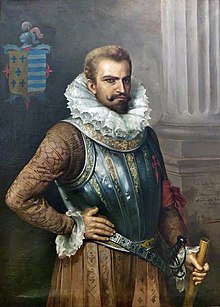


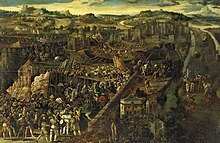


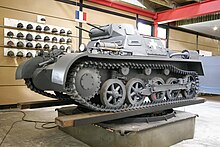

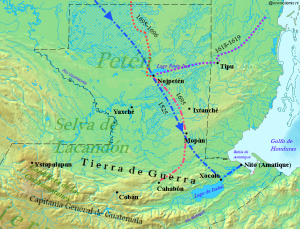






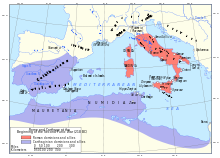


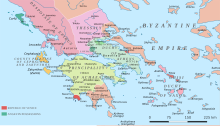








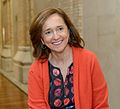


















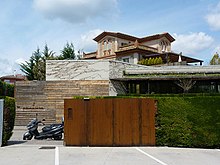




























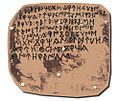




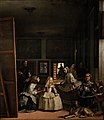









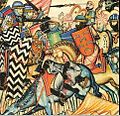





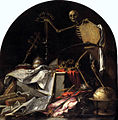







![Image 49Detail of the votive crown of Recceswinth from the Treasure of Guarrazar, (Toledo-Spain) hanging in Madrid. The hanging letters spell [R]ECCESVINTHVS REX OFFERET [King R. offers this]. (from History of Spain)](http://upload.wikimedia.org/wikipedia/commons/thumb/f/f2/Corona_de_%2829049230050%29.jpg/57px-Corona_de_%2829049230050%29.jpg)










































